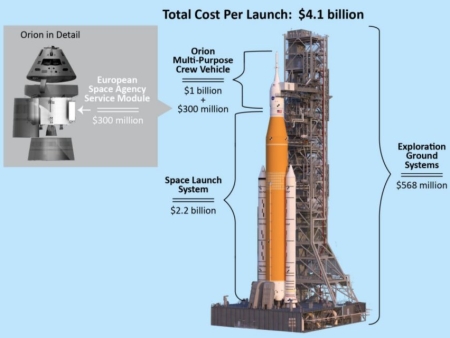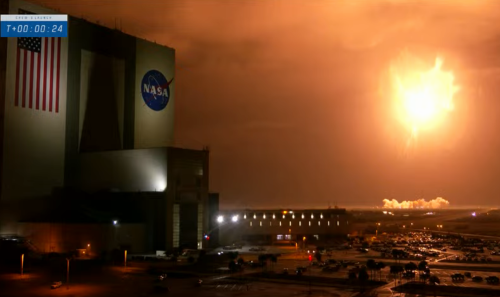Engineers replace engine controller on SLS core; launch to be delayed
Engineers have successfully replaced the failed engine controller on the core stage of NASA’s SLS rocket.
Last week engineers and technicians successfully removed and replaced an engine controller from one of four RS-25 engines after the team identified an issue during a power-up test of the rocket’s core stage. Engineers are now performing standard engine controller diagnostic tests and check-outs, including controller power-up and flight software load. Subsequently, the team will work to complete all remaining SLS pre-flight diagnostic tests and hardware closeouts in advance of a mid-February rollout for a wet dress rehearsal in late February. NASA will set a target launch date after a successful wet dress rehearsal test.
The official schedule still lists the launch for February, but NASA has already admitted this is now impossible. Once they complete the wet dress rehearsal on the launchpad they will have to roll the rocket back into the Vehicle Assembly Building to do further tests. While it remains possible for NASA to meet an April launch window, more likely the agency will push back to windows during the summer.
Thus, the race between SLS and Starship for completing the first orbital flight remains neck-and-neck. Starship could launch this spring, but it faces an uncertain schedule determined not by SpaceX but by the bureaucracy in the federal government, which is reviewing the FAA’s environment reassessment for the Boca Chica launch site and really has no requirement to meet any schedule at all. The FAA says it plans to approve the reassessment by the end of February, but that is simply made up deadline. It could revise it at will at any time.
NASA meanwhile is still pushing to launch SLS in April, but this launch date is entirely unrealistic. Expect NASA to announce a new target date sometime in the summer in the coming weeks.
Engineers have successfully replaced the failed engine controller on the core stage of NASA’s SLS rocket.
Last week engineers and technicians successfully removed and replaced an engine controller from one of four RS-25 engines after the team identified an issue during a power-up test of the rocket’s core stage. Engineers are now performing standard engine controller diagnostic tests and check-outs, including controller power-up and flight software load. Subsequently, the team will work to complete all remaining SLS pre-flight diagnostic tests and hardware closeouts in advance of a mid-February rollout for a wet dress rehearsal in late February. NASA will set a target launch date after a successful wet dress rehearsal test.
The official schedule still lists the launch for February, but NASA has already admitted this is now impossible. Once they complete the wet dress rehearsal on the launchpad they will have to roll the rocket back into the Vehicle Assembly Building to do further tests. While it remains possible for NASA to meet an April launch window, more likely the agency will push back to windows during the summer.
Thus, the race between SLS and Starship for completing the first orbital flight remains neck-and-neck. Starship could launch this spring, but it faces an uncertain schedule determined not by SpaceX but by the bureaucracy in the federal government, which is reviewing the FAA’s environment reassessment for the Boca Chica launch site and really has no requirement to meet any schedule at all. The FAA says it plans to approve the reassessment by the end of February, but that is simply made up deadline. It could revise it at will at any time.
NASA meanwhile is still pushing to launch SLS in April, but this launch date is entirely unrealistic. Expect NASA to announce a new target date sometime in the summer in the coming weeks.


